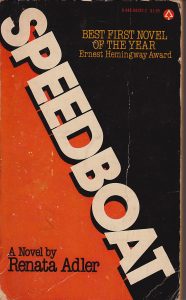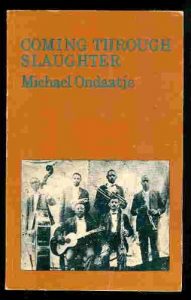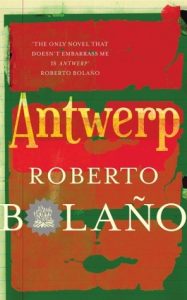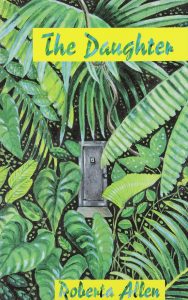
by Michael Loveday
In recent years, there’s been an exponential increase in the publication of novels-/novellas-in-flash. Is there a literary form that offers a closer approximation of contemporary Western existence? The novella-in-flash articulates a modern tension between two opposing worldviews. One sees the individual life as a ‘story’ (cf. narrative psychologist Dan McAdams: “Life stories are personality”), something with a past, present and future – an arc. Another, following Eastern religious traditions and the ‘mindfulness’ movement so popular recently in the West, sees life as “nothing more than a constant series of present moments to be experienced” (Richard Carlson). The tension between these opposites finds its most complete expression within the novella-in-flash / novel-in-flash: the form emphasises the importance of single, illuminated moments yet somehow suggests that a broader arc exists beyond these epiphanies, even as it wilfully deprives us of linear storyline.
However, despite its contemporary burst of popularity, the novel-/novella-in-flash is a form with roots. These mini-reviews of novels/novellas-in-flash all written before the term was coined is the second of three parts. If you missed Part I, go HERE.
Let’s dive in.
- Speedboat, by Renata Adler (1976)
 This series of dispatches from the frontline of 1970s metropolitan America is a disorienting collage disregarding all sense of narrative progression. It bears comparison with Will Eaves’s The Absent Therapist (CB Editions, 2014); but while Eaves airdrops us relentlessly into the private worlds of a series of unknown individuals, Adler’s book is focused on the observations of one person – Jen Fain, a journalist and academic, who lurks in the background as a narrator, glimpsed more through her judgements than the little information we glean about her actions or relationships. She is morally precise, amused, amusing, fearful, detached, sensitive. Adler’s prose style is sculpted with exacting care, making fastidious, rhythmical use of commas. We learn about Fain’s communities – friends, work institutions, contemporary society – but she herself attempts to slip into hiding from the reader. The paragraphs are sprinkled with aphorisms lifted from some twisted self-help manual: “The shortest distance between two points may well be the wrong way on a one way street.” (p.169). These mingle with anecdotes about peers, commentaries upon morals and contemporary politics, glimpses of Fain’s work as journalist and academic. Katie Roiphe has claimed Speedboat belongs to a category of 1970s women’s fiction called “Smart Woman Adrift” novels: they share a sense of messy fragmentation, drifting instability, and yet “a supremely controlled tone”. As their fraught detachment circles around – but avoids – absolute collapse they effect a kind of “stylish and mild nervous breakdown”. Speedboat is certainly a difficult read, because it makes few concessions to readerly expectations of plot, or traditional narration and characterisation. And yet its jittery form is the essence of its originality. Adler’s ground-breaking style still astonishes, over forty years later.
This series of dispatches from the frontline of 1970s metropolitan America is a disorienting collage disregarding all sense of narrative progression. It bears comparison with Will Eaves’s The Absent Therapist (CB Editions, 2014); but while Eaves airdrops us relentlessly into the private worlds of a series of unknown individuals, Adler’s book is focused on the observations of one person – Jen Fain, a journalist and academic, who lurks in the background as a narrator, glimpsed more through her judgements than the little information we glean about her actions or relationships. She is morally precise, amused, amusing, fearful, detached, sensitive. Adler’s prose style is sculpted with exacting care, making fastidious, rhythmical use of commas. We learn about Fain’s communities – friends, work institutions, contemporary society – but she herself attempts to slip into hiding from the reader. The paragraphs are sprinkled with aphorisms lifted from some twisted self-help manual: “The shortest distance between two points may well be the wrong way on a one way street.” (p.169). These mingle with anecdotes about peers, commentaries upon morals and contemporary politics, glimpses of Fain’s work as journalist and academic. Katie Roiphe has claimed Speedboat belongs to a category of 1970s women’s fiction called “Smart Woman Adrift” novels: they share a sense of messy fragmentation, drifting instability, and yet “a supremely controlled tone”. As their fraught detachment circles around – but avoids – absolute collapse they effect a kind of “stylish and mild nervous breakdown”. Speedboat is certainly a difficult read, because it makes few concessions to readerly expectations of plot, or traditional narration and characterisation. And yet its jittery form is the essence of its originality. Adler’s ground-breaking style still astonishes, over forty years later.
- Coming Through Slaughter, by Michael Ondaatje (1976)
 In Coming Through Slaughter, form mirrors content. This historical novella, about New Orleans jazz pioneer Buddy Bolden, uses fragmentation to evoke Bolden’s syncopated music and his eventual disintegration into mania and schizophrenia. The prose is muscular and poetic, breaking at times with grammar rules in a way that is both free-spirited and under pressure – phrases released from the depths. There are occasional passages of stark eroticism – body matters to Ondaatje as much as mind or spirit. A detective story of sorts, it is riddled with acts of research and pursuit, as characters seek to track Bolden down and a withdrawn narrator reveals the root of his fascination with this enigma. Life in America at the turn of the century is vivid with nascent capitalism, whorehouses, pre-prohibition bars, spontaneous outdoor performances. The social context is a whirl of equivocal friendships, damaged intimacy, ill-disciplined talents, evasions. At the core of Bolden’s self-destructive artistic genius lie infidelity, paranoia, even violence: at any moment, he might prove untrustworthy with a razor, or sell his partner’s privacy to another man. The novel asks a lot of its readers’ attention in getting to grips with its large cast of secondary characters while the switches of point of view, protagonist and form disrupt linear reading. When Bolden disintegrates, the novel itself breaks up into timelines, hospital reports and interview transcripts. It’s a wonderful, revelatory shift. As a novella-in-flash it’s more a compilation of fragments of differing lengths than a sequence of rounded, self-standing short-short stories, but there’s still a plot and defined cast of characters discernible in the midst of it. A magnificently intense depiction of the jazz age that refuses, like the improvised complexities of jazz itself, to settle into certainty.
In Coming Through Slaughter, form mirrors content. This historical novella, about New Orleans jazz pioneer Buddy Bolden, uses fragmentation to evoke Bolden’s syncopated music and his eventual disintegration into mania and schizophrenia. The prose is muscular and poetic, breaking at times with grammar rules in a way that is both free-spirited and under pressure – phrases released from the depths. There are occasional passages of stark eroticism – body matters to Ondaatje as much as mind or spirit. A detective story of sorts, it is riddled with acts of research and pursuit, as characters seek to track Bolden down and a withdrawn narrator reveals the root of his fascination with this enigma. Life in America at the turn of the century is vivid with nascent capitalism, whorehouses, pre-prohibition bars, spontaneous outdoor performances. The social context is a whirl of equivocal friendships, damaged intimacy, ill-disciplined talents, evasions. At the core of Bolden’s self-destructive artistic genius lie infidelity, paranoia, even violence: at any moment, he might prove untrustworthy with a razor, or sell his partner’s privacy to another man. The novel asks a lot of its readers’ attention in getting to grips with its large cast of secondary characters while the switches of point of view, protagonist and form disrupt linear reading. When Bolden disintegrates, the novel itself breaks up into timelines, hospital reports and interview transcripts. It’s a wonderful, revelatory shift. As a novella-in-flash it’s more a compilation of fragments of differing lengths than a sequence of rounded, self-standing short-short stories, but there’s still a plot and defined cast of characters discernible in the midst of it. A magnificently intense depiction of the jazz age that refuses, like the improvised complexities of jazz itself, to settle into certainty.
- Antwerp, by Roberto Bolaño (1980/2002)
 Antwerp was written in 1980 but only published just before Bolaño’s death, aged 50, in 2003. The Chilean writer called it “the only novel that doesn’t embarrass me.” It’s surely the most avant-garde of all the books here. To say that it reads like notes for a novel that was too difficult to write sounds grossly harsh; and yet it is not far from a truth – the 56 chapters sometimes sound like notes for a screenplay, or descriptions of an audience watching scenes on a screen (a film screening does indeed ‘take place’ within the book). Even a chapter titled ’20. Synopsis: the Wind’ contains no plot, only a series of unrelated one-sentence situations. A ‘nameless girl’, a hunchback, policeman, medic, and an Englishman are recurring figures but they’re remote, barely glimpsed archetypes. A murder apparently has taken place; passages sound like witness statements. Snatched, jump-cut dialogue is offered, the speakers unidentified. An aphorism might leap out in the midst of description. It’s as if the chapters are expressions of daydreams from the author’s complicit, guilty consciousness – a witness/perpetrator of an unknown crime, the author standing in for all of us. “[Y]ou saw a man on the ground under the trees and you kept running.” (p.60) “I dream of faces that open their mouths and can’t speak. They try but they can’t.” (p.61) There are many irresistible moments in these stylised but fragmented pieces: “An urge, at the cost of nervous collapse in cheap rooms, propels poetry toward something that detectives call perfection.” (p.32). Bolaño’s ‘crime novel’ is like a desert mirage located in a shimmering, film noir landscape of deserted highways, trains, woods, campgrounds, hallways and dimly lit bedrooms. Understanding the ‘story’, I suspect, not the point. A crime has taken place; and you, dear reader, are involved.
Antwerp was written in 1980 but only published just before Bolaño’s death, aged 50, in 2003. The Chilean writer called it “the only novel that doesn’t embarrass me.” It’s surely the most avant-garde of all the books here. To say that it reads like notes for a novel that was too difficult to write sounds grossly harsh; and yet it is not far from a truth – the 56 chapters sometimes sound like notes for a screenplay, or descriptions of an audience watching scenes on a screen (a film screening does indeed ‘take place’ within the book). Even a chapter titled ’20. Synopsis: the Wind’ contains no plot, only a series of unrelated one-sentence situations. A ‘nameless girl’, a hunchback, policeman, medic, and an Englishman are recurring figures but they’re remote, barely glimpsed archetypes. A murder apparently has taken place; passages sound like witness statements. Snatched, jump-cut dialogue is offered, the speakers unidentified. An aphorism might leap out in the midst of description. It’s as if the chapters are expressions of daydreams from the author’s complicit, guilty consciousness – a witness/perpetrator of an unknown crime, the author standing in for all of us. “[Y]ou saw a man on the ground under the trees and you kept running.” (p.60) “I dream of faces that open their mouths and can’t speak. They try but they can’t.” (p.61) There are many irresistible moments in these stylised but fragmented pieces: “An urge, at the cost of nervous collapse in cheap rooms, propels poetry toward something that detectives call perfection.” (p.32). Bolaño’s ‘crime novel’ is like a desert mirage located in a shimmering, film noir landscape of deserted highways, trains, woods, campgrounds, hallways and dimly lit bedrooms. Understanding the ‘story’, I suspect, not the point. A crime has taken place; and you, dear reader, are involved.
- The Daughter, by Roberta Allen (1992)
 The Daughter is another unsettling novella-in-flash. There are no named characters – Allen offers us only ‘the woman’, ‘the girl’, ‘the father’, ‘the daughter’, ‘the man’ etc. And she makes few concessions to the reader in the book’s structure – we may perceive a repeated adult female character travelling through the Amazon, and also a young girl (‘the daughter’) within a family, and the implication may be that they are the same woman: two different timelines have been presented concurrently. But this impression is gleaned only from implications and buried clues. The absence of explicit links aside, the individual stories are deceptively simple, written in a brisk, matter-of-fact third-person style. At times, Allen echoes Hemingway’s minimalism, with a ‘witness narrator’ moving with cool detachment from character to character within each story. At other times Allen veers into rich rhapsodies about landscapes or a character’s inner world –passages of astonished, exotic descriptions alternate with finely-tuned psychological insights. The adult female traveller seems estranged from herself – she journeys through South American locations, always searching for who she is. The young girl who lives in a hotel with her family has mixed feelings about her father, a gambler who eventually commits suicide. Linear chronology is obscured as the stories shimmer elusively, hard to pin down firmly in terms of time, place or person. Stories accumulate by relationship with each other to create a network of meanings: a portrait of womanhood, a bildungsroman by suggestion, a beguiling study of a restless, curious soul.
The Daughter is another unsettling novella-in-flash. There are no named characters – Allen offers us only ‘the woman’, ‘the girl’, ‘the father’, ‘the daughter’, ‘the man’ etc. And she makes few concessions to the reader in the book’s structure – we may perceive a repeated adult female character travelling through the Amazon, and also a young girl (‘the daughter’) within a family, and the implication may be that they are the same woman: two different timelines have been presented concurrently. But this impression is gleaned only from implications and buried clues. The absence of explicit links aside, the individual stories are deceptively simple, written in a brisk, matter-of-fact third-person style. At times, Allen echoes Hemingway’s minimalism, with a ‘witness narrator’ moving with cool detachment from character to character within each story. At other times Allen veers into rich rhapsodies about landscapes or a character’s inner world –passages of astonished, exotic descriptions alternate with finely-tuned psychological insights. The adult female traveller seems estranged from herself – she journeys through South American locations, always searching for who she is. The young girl who lives in a hotel with her family has mixed feelings about her father, a gambler who eventually commits suicide. Linear chronology is obscured as the stories shimmer elusively, hard to pin down firmly in terms of time, place or person. Stories accumulate by relationship with each other to create a network of meanings: a portrait of womanhood, a bildungsroman by suggestion, a beguiling study of a restless, curious soul.
_____________________________________
 Michael Loveday’s novella-in-flash Three Men on the Edge (V. Press, 2018) was shortlisted for the 2019 Saboteur Award for Best Novella. He also writes poetry, with a pamphlet He Said / She Said published by HappenStance Press (2011). He has been judge of the 2019 and 2020 Novella-in-Flash competitions at Bath Flash Fiction Award. In addition to working as an editor for novellas-in-flash, he helps writers incubate ideas for novellas through an online one-to-one course: https://novella-in-flash.com/.
Michael Loveday’s novella-in-flash Three Men on the Edge (V. Press, 2018) was shortlisted for the 2019 Saboteur Award for Best Novella. He also writes poetry, with a pamphlet He Said / She Said published by HappenStance Press (2011). He has been judge of the 2019 and 2020 Novella-in-Flash competitions at Bath Flash Fiction Award. In addition to working as an editor for novellas-in-flash, he helps writers incubate ideas for novellas through an online one-to-one course: https://novella-in-flash.com/.

 The core workshop of SmokeLong Fitness is all in writing, so you can take part from anywhere at anytime. We are excited about creating a supportive, consistent and structured environment for flash writers to work on their craft in a community. We are thrilled and proud to say that our workshop participants have won, placed, or been listed in every major flash competition. Community works.
The core workshop of SmokeLong Fitness is all in writing, so you can take part from anywhere at anytime. We are excited about creating a supportive, consistent and structured environment for flash writers to work on their craft in a community. We are thrilled and proud to say that our workshop participants have won, placed, or been listed in every major flash competition. Community works.